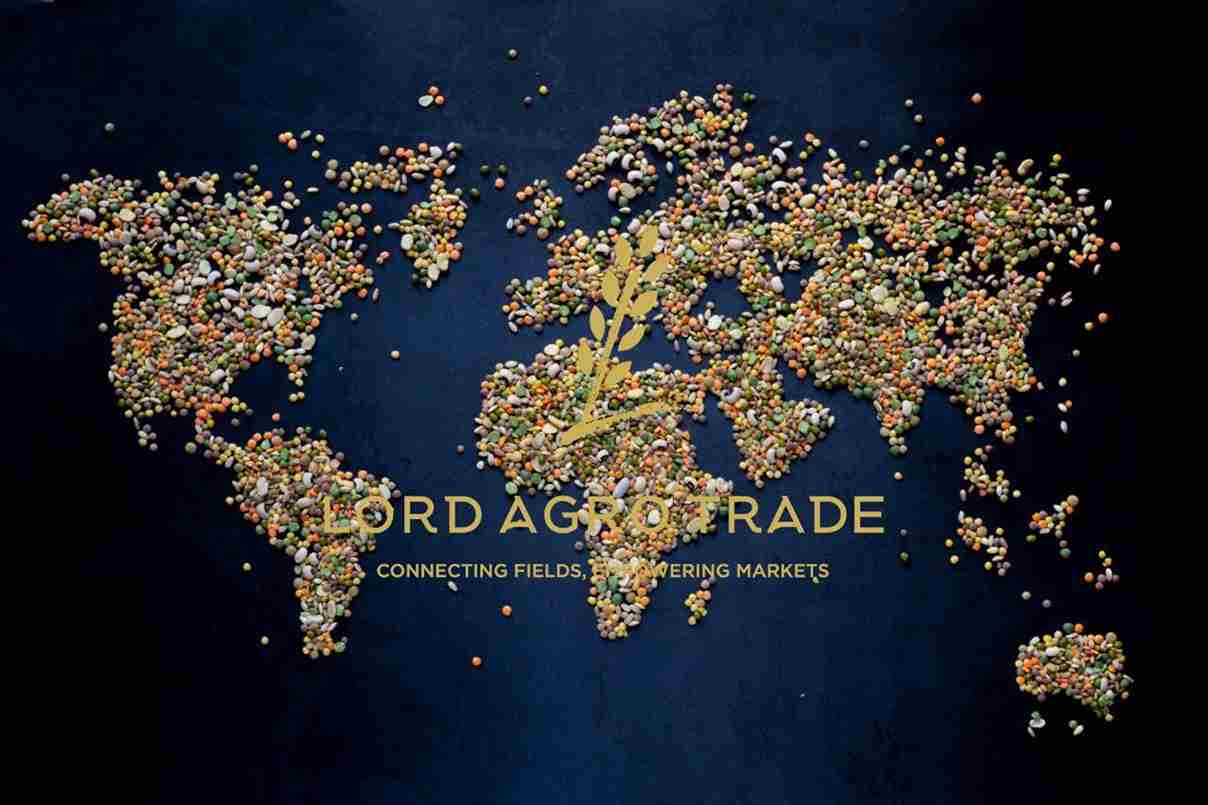Gulfood
17 To 21 FEB 2025 | DUBAI WORLD TRADE CENTRE
We’re excited to see you at Gulfood 2025!
Gulfood
17 To 21 FEB 2025 | DUBAI WORLD TRADE CENTRE
We’re excited to see you at Gulfood 2025!


Lentils are the most important nutritionally of the legumes accepted worldwide due to their superior nutritional values and their importance for human diet. Lentils are abundant in proteins, fiber, vitamins, and minerals, and are considered an inexpensive source of protein and micronutrients. Lentil plays an important role concerning health and finances as it now gives one of the major sources of income to many producing countries through exports and production.
This article seeks to bring forth the largest lentil producers in the world and rank accordingly the major players in lentils production and export.
These small legumes provide an outstanding source of protein for vegetarians and people with a diet low in fats. Lentils are packed with fibers, iron, potassium, and about all B vitamins that contribute to heart health, regulate blood sugar levels, and boost the immune system. Such potentials have made lentils one of the most consumed foods in the world.
Lentils are important in agriculture. They improve soil quality through nitrogen fixing, making them an economical alternative for farmers. Among the largest lentil producers in the world are Canada and India, both with excellent production capacities that contribute significantly to the international lentil trade. Canada is often seen as the largest lentil exporter, while India is one of the largest consumers and producers of lentils for domestic purposes. These countries thus share a prominent role in the joint global market for lentils.
The intake of lentils at a global scale has actively improved thanks to an increase in health food awareness and the preference of plant-based diets. This demand rise has made the producing countries move towards advanced technologies to improve agricultural practices in trying to retain their positions in the list of the biggest producers of lentils.

Supply and export red lentils with us
These comprise a number of countries that dominate world lentil production. Highly regarded as the biggest exporter and one of the largest lentil producers, Canada is reportedly the world’s largest exporter and producer of this major legume. The quantity in which Canada brings lentils into the global market is unprecedented; the beans are grown in bulk, mainly in the provinces of Saskatchewan and Alberta. India is the second-largest lentil producer in the world, and their important demand is correlated with various rich culinary traditions. The world’s third largest producer of high-quality lentils is Australia, and this country exports most of its produce to other countries.
Turkey accounts for a large portion of the total lentil production, the other one being by the US, where lentil plantation is done mostly in the northwestern states of Montana and Washington. These five countries, representing a variety of climates and agricultural methods, are among the largest lentil producers and leaders in the world trade in lentils, guaranteeing their availability in all parts of the planet, especially in Asia and the Middle East.

| Rank | Country | Annual Production (tons) |
| 1 | Canada | 2,000,000+ |
| 2 | India | 1,200,000+ |
| 3 | Australia | 500,000+ |
| 4 | Turkey | 400,000+ |
| 5 | United States | 250,000+ |
This table highlights why these nations are among the largest lentil producers and their significant influence on global trade.
It is the largest lentil export market in the world and one of the largest lentil producers. Canada produces over 2 million tons every year, most of which comes from Saskatchewan and Alberta, strong production provinces with a favorable climate and rich, fertile soil. Thus, those two areas are vital for national leadership in this regard. A sizeable fraction of lentils produced in Canada gets exported to various international markets, especially in places like Asia and the Middle East, where lentils form a major constituent of many traditional cuisines. The top-grade Canadian lentils provide an opportunity for a variety range, including red, green, and brown, offering both nutrition and culinary versatility.
Ideal Climate: Lentil farming is ideally supported by the cold weather and nutrient-rich soils in Western Canada.
Mechanized farming technique: Canadian farmers use very advanced techniques like precision planting, effective irrigation, and mechanized equipment.
Topmost Quality and Class: Regarding quality and class, Canadian lentils are one of the primary choices in the international marketplace for their top-notch quality.
Other Major Countries
In addition to being one of the leading lentil producers, India is also the world’s largest lentil consumer. The internal market demands ensure lentil production for the country.
Australia has extensive agricultural lands and a fair-weather climate, making it one of the largest lentil producers and suppliers to the world, including Asian markets. Turkey, with a long history of red lentil production, plays an important role in the global lentil trade, offering products mostly to Europe and the Middle East. The U.S. also produces fine lentils, primarily in Montana and North Dakota, where a significant part of the harvest is exported.
Each of these countries enjoys favorable climatic conditions, well-established agricultural policies, and modern farming technologies that help them remain at the top of the global lentil market. As a result, they are well-positioned to fulfill the rising global demand and maintain their status as largest lentil producers, supplying even more countries with lentils.
Suitable Climate for the Growth of Lentil
The lentil plant can be grown in specific climatic and soil conditions. Areas that experience semi-arid climate with moderate or low rainfall promote the growth of lentils. Regions like Western Canada, Southern Australia: Due to these favorable weather characteristics, southern Australia is one such ideal climate for lentil growing.
Rich, Well-Drained Soil: Lentils grow well in the soil that is mineral-rich and therefore highly drained. This has been observed in numerous high-yield agricultural regions such as Turkey and India where the soil conditions have tremendously increased lentil productions under such circumstances. Short Growing Season: Lentils produce within a shorter range of 70 to 120 days, thus making them very convenient for regions that have a limited or short growing season.
Modern Agricultural Technology and Practice
Improved and more efficient agricultural equipment; contemporary processes and techniques have helped boost lentil yield and quality.
Precision Planting: In many developed countries like Canada, facing towards modern technologies precision planting has reduced the wastage of resources and increased production. New irrigation technology to apply water efficiently and discourage the growth of pests in excess. Use of Modern Machinery: The use modern agriculture machinery-relative comfort, in developed countries reduced the load of planting, harvesting, and processing of lentils. Genetic Research: Development in Australia and the USA of varieties resistant to diseases and pests provides assurance to sustainable production of lentils.
Agricultural and Economic Policies in Leading Countries
Through government support and sound economic policies, countries producing lentils can take pride in their positions. Subsidy in Agriculture: Countries like India have their governments giving subsidies to farmers for lentil cultivation. Trade Treaties: This has seen Canada use international trade agreements to expand the scope of its export markets, thus consolidating its position as the largest lentil producer.
Support for Research and Development: The above funding has enabled farmers to reduce the effect of negative factors such as climate changes and infestation of the plants by pests. Crop Diversification: For example, Turkey and Australia have created policies that encourage farmers to cultivate several different types of lentils. These have made sure that the countries, with these typical advantages, would continue to dominate in world lentil production and remain the leading lentil-producing countries.
Conclusion
As the most important legume in the world, lentils are very much consumed by most people; additionally, it enhances the economy of the countries where it is produced. Now, out of all the major lentil-producing countries, Canada leads as the top lentil producer and also a lentil exporter in the world. The other countries which closely follow Canada include India, Australia, Turkey, and the United States which make their own contributions through unique advantages that they have for example their different climates, technology and agricultural policies.
Lentils are really important as food; this improves soil fertility and gives a constant commodity for the economy, thereby acting as export and import. Being the largest lentil-producing countries, the topmost remains among the greatest producers of lentils because of its use of technology, policy-making, and appropriate development in sustainable development to achieve global demand.
Lord Agro Trade Co. is renowned as one of the premier lentil suppliers and exporters in Canada, providing a diverse range of high-quality pulses and grains to meet your needs.
© Copyright 2024 Lord agro trade